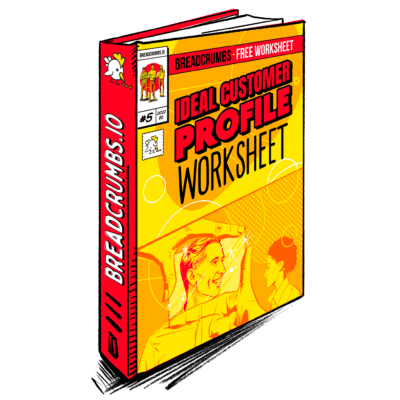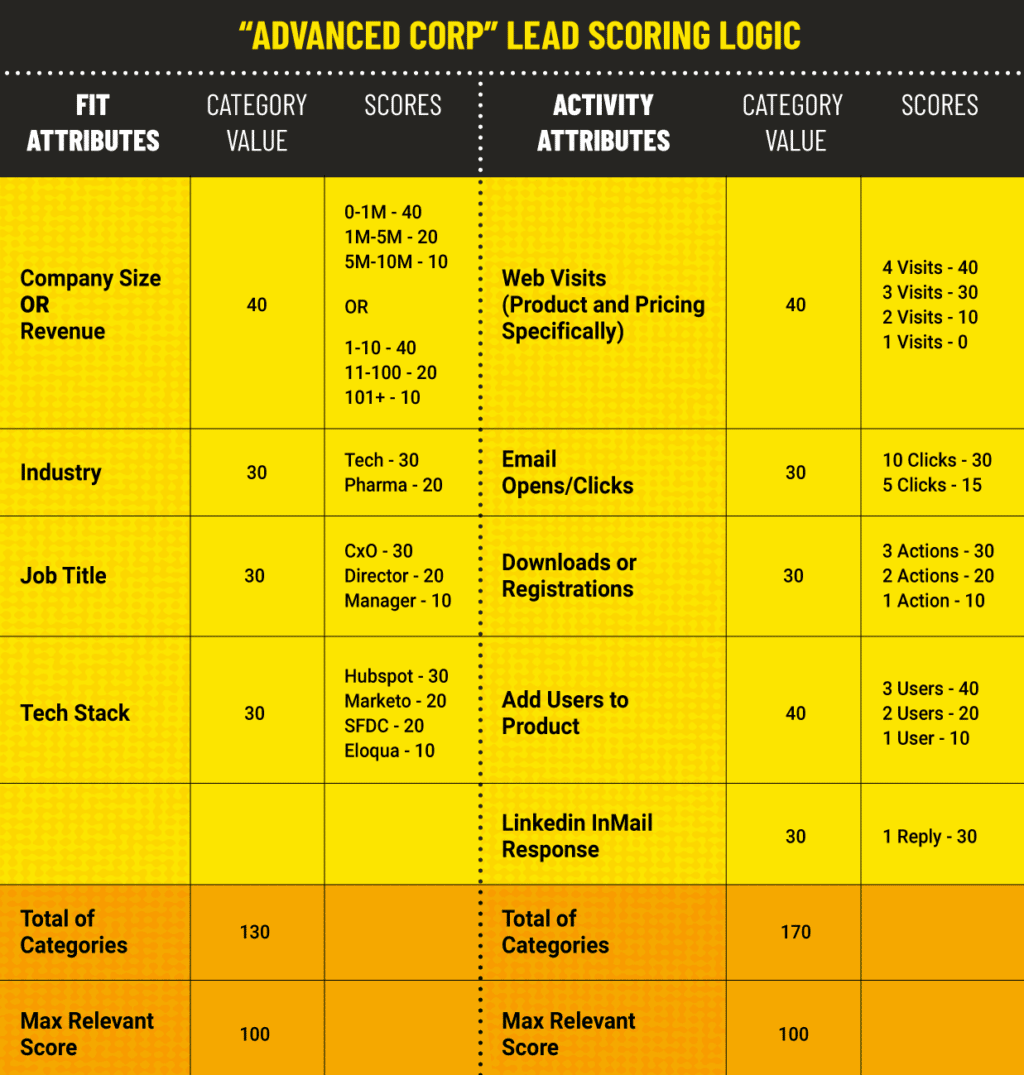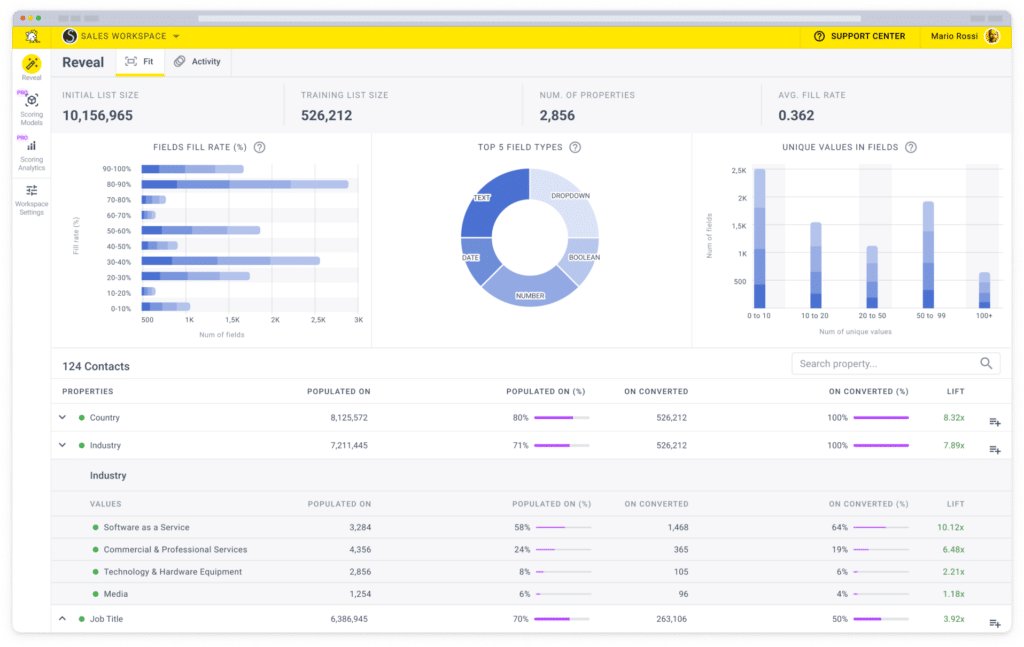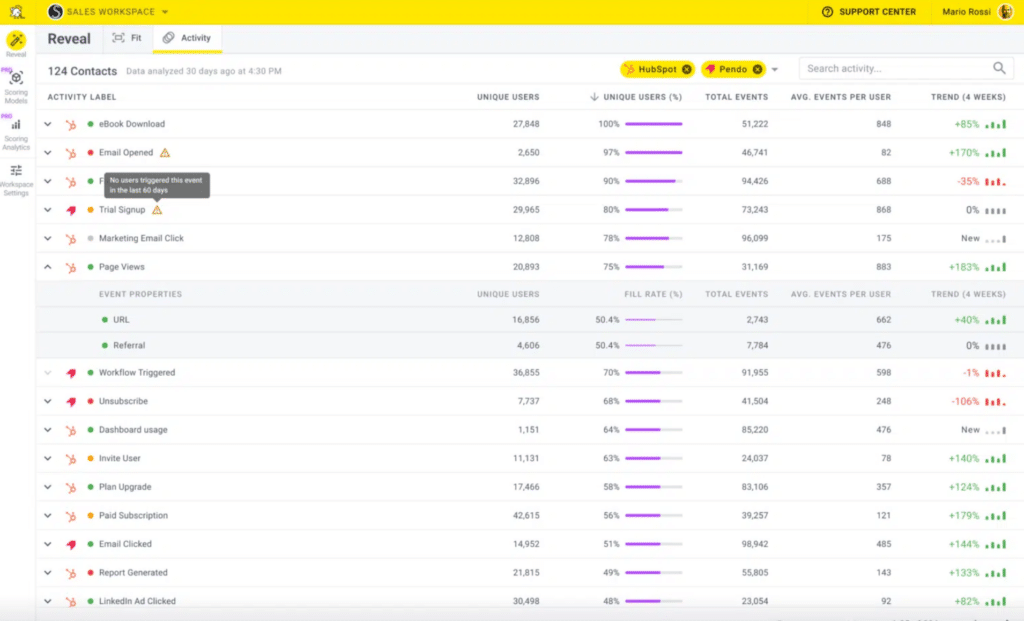Ever feel like you’re putting in a ton of sales effort, but the deals just aren’t closing? It might be time to take a closer look at your win-to-loss ratio (WTLR).
In this article, we’ll delve into the world of win-to-loss ratios, exploring what they are, why they matter, and, most importantly, how you can improve yours for a more effective sales process.
We’ll also explore the critical role of lead scoring in boosting your win rate and how Breadcrumbs, a powerful lead-scoring tool, can take your sales performance to the next level.
Whether you’re a seasoned sales professional, a manager looking to drive results, or a business owner seeking out better sales opportunities and optimizing your sales funnel, this article has valuable insights to help you close more deals and achieve sustainable growth.
Understanding the Win-to-Loss Ratio
Before we dive into the “how,” let’s tackle the basics.
Win-to-Loss Ratio Definition
The win-to-loss ratio (WTLR) is a key performance indicator (KPI) that measures marketing teams’ efficiency and success rate, your sales process, and more. It essentially tells you the percentage of good outcomes compared to the number of bad outcomes.
You can calculate the WTLR with the following formula:

For example, in stock trading, the win-to-loss ratio measures how many successful trades you’ve made for every unsuccessful trade. In this case, it represents a trading metric for the quality of your trading strategies over a given period. However, in the rest of this article, we’ll focus on the win-to-loss ratio applied to sales.
When you use this formula to assess the success rate in your sales cycle, the WTLR helps measure the percentage of qualified leads that convert into paying customers (successful deals) compared to the number of leads that don’t convert.
In this context, a win-to-loss ratio of 80% means you effectively converted eight leads for every 10 that didn’t convert.
The win-to-loss ratio is used in multiple fields, including:
- The stock market
- Marketing
- Sales
There’s no general rule as to what makes a good win-to-loss ratio, as it depends on multiple factors.
For example, in sales, a 50:50 ratio (100%) is sometimes considered good when working with nurtured leads, while a 1:5 (20%) might be good for top-of-funnel campaigns.
Importance and Benefits of Improving the Win-To-Loss Ratio
Why should you care about your WTLR? Because a higher win rate implies a more effective sales funnel.
Therefore, improving your WTLR can bring the following benefits to your business:
- Increased revenue: More closed deals translate directly to a boost in top-line growth. A higher win rate means you’re converting more leads into customers, leading to a significant increase in revenue.
- Improved sales efficiency: A strong WTLR indicates you’re focusing efforts on qualified leads, maximizing sales rep time and resources. Keeping your loss rates low means your sales strategies are working efficiently.
- Enhanced Customer Acquisition Cost (CAC): By attracting better-fit leads, you can optimize marketing spend and reduce the cost of acquiring new customers. A higher win rate signifies you’re attracting leads who are a good fit for your product or service. This allows you to refine your marketing efforts to target the right audience, ultimately reducing the cost per acquisition.
- Valuable insights into business processes: Sales leaders use the win-to-loss ratio to gain insights into their entire sales process. Tracking loss rates over time lets businesses assess performance over time, guiding future business decisions.
- Better sales forecasting: A consistent WTLR allows for more accurate sales forecasting, improving financial planning and resource allocation. With a predictable win rate, you can forecast sales performance with greater accuracy. This empowers you to make informed decisions about resource allocation, budgeting, and hiring.
Method of Calculating the Win-To-Loss Ratio
Calculating your WTLR is straightforward. Simply track the number of deals won and lost within a specific period of time (e.g., quarter, year), divide the number of wins by the number of losses, and multiply by 100 to express it as a percentage.
For example, let’s say you closed 20 deals and lost 10 during a quarter. Your WTLR would be:
Win-to-loss ratio = (20 wins/10 losses) * 100 % = 200%
While a percentage above 100% might seem unusual, it simply means you closed twice as many deals as you lost in that period.
Now that we understand the significance of the win-to-loss ratio, let’s explore strategies to improve it.
5 Strategies To Improve Your Win-To-Loss Ratio
Here are five key strategies to elevate your WTLR and transform your sales performance.
Strategy 1: Understanding Customer Needs Better
One of the best ways to improve your WTLR is to understand your customers’ needs and pain points and use that knowledge to guide your sales and marketing efforts.
This strategy implies that you:
- Conduct in-depth customer research. Don’t just assume you know what your customers need. Conduct market research, analyze customer data, and gather feedback through surveys and interviews. This will help you identify your ideal customer profile (ICP) and their specific needs, challenges, and pain points.
- Develop buyer personas by creating detailed profiles representing your ideal customer, including demographics, behaviors, buying journey stages, and decision-making processes.

Ebook
Ideal Customer Profile (ICP) Worksheet
Learn how to create an Ideal Customer Profile and build a successful sales strategy with this Ideal Customer Profile (ICP) Worksheet.
- Tailoring your sales pitch by aligning your sales message with your ICP’s needs and demonstrating how your product or service directly addresses their challenges. This personalized approach will resonate more deeply with potential customers and increase your chances of closing the deal.
Strategy 2: Making Lead Quality a Priority
The second strategy is to focus only on good leads that are more likely to convert. This will reduce your loss rates and improve your win-to-loss ratio.
Focusing on lead quality implies that you:
- Implement lead qualification criteria by establishing clear guidelines to assess whether a lead is a good fit for your offerings. This helps sales reps prioritize resources and avoid wasting time on unqualified leads who are unlikely to convert.
- Utilize lead scoring, which means assigning points to leads based on their activities, demographics, and firmographics (more on this below).
Strategy 3: Leverage Competitive Intelligence
Gaining a deeper understanding of your competitors and their offerings is crucial for improving your win-to-loss ratio. Competitive intelligence (CI) equips you with valuable insights to refine your sales and marketing strategies, ultimately leading to more wins.
Here’s how to incorporate CI into your WTLR improvement plan:
- Track competitor activity: Monitor your competitors’ marketing campaigns, product launches, and pricing strategies. Use industry publications, social media listening tools, and competitor websites to stay informed about their latest moves.
- Identify your competitive advantage: Analyze your strengths and weaknesses relative to your competitors. By understanding what truly sets you apart, you can tailor your sales pitch to emphasize those unique value propositions and win over prospects on the fence.
Analyze win/loss data for competitive insights: During win/loss interviews, don’t just focus on why customers chose you but also explore why they considered your competitors. Uncover what aspects of your competitors’ offerings were attractive and where they fell short.
By incorporating competitive intelligence into your WTLR strategy, you gain a strategic edge in the marketplace. You can proactively address customer concerns about competitors and position your offerings as the superior solution.
Strategy 4: Improving Product/Service Quality
All else equal, better products and services will always lead to better conversions as long as your marketing and sales messages are spot on. So, improving your offerings to potential clients is one clear path to a higher WTLR.
This improvement can come from:
- Continuously gathering customer feedback through surveys, customer success calls, and social media interactions.
- Investing in product development by allocating resources towards product R&D. A best-in-class product or service will naturally convert more leads into loyal customers.
Strategy 5: Enhancing Sales Skills
Improving your sales team’s skills is another effective way to increase wins over losses.
This strategy implies that you:
- Providing ongoing sales training to equip your sales reps with the knowledge and skills needed to excel. Well-trained reps can effectively navigate the sales cycle, build rapport with prospects, and ultimately close more deals.
- Implement sales coaching and mentorship to your sales team. Sales coaching helps reps identify areas for improvement, gain actionable insights, refine their sales techniques, and learn from experienced professionals.
Role of Lead Scoring in Improving the Win-To-Loss Ratio
Lead scoring is a methodology that assigns a numerical value to each lead based on their actions, demographics, and firmographics. These actions include website visits, content downloads, email engagement, webinar attendance, and social media interactions.
Demographics might encompass factors like job title, company size, and industry, while firmographics include company-specific details like revenue and location.
By analyzing these data points, you can assign a score to each lead, indicating their likelihood to convert. Leads with higher scores are deemed sales-qualified and prioritized for outreach by your sales team.
This targeted approach ensures reps are focusing on the most promising leads, maximizing their time and resources.
How Lead Scoring Can Help Improve the Win-To-Loss Ratio
Lead scoring directly impacts your win-to-loss ratio by:
- Prioritizing qualified leads. Your sales reps spend less time chasing unqualified leads and dedicate their efforts to nurturing high-potential prospects who are more likely to convert.
- Improving sales rep efficiency: Focusing on qualified leads helps reps close deals faster and achieve higher quotas, resulting in a more efficient sales operation.
- Boosting sales pipeline quality: Lead scoring ensures your sales pipeline is filled with qualified leads who are a good fit for your product or service. This improves the overall quality of your pipeline and increases the likelihood of successful conversions.
Breadcrumbs: A Crucial Tool for High-Performing Lead Scoring
As you can see, lead scoring is a powerful tool to improve your WTLR. But how do you score hundreds, if not thousands, of leads effectively, efficiently, and consistently?
If left to sales reps, differences in criteria might render lead scoring ineffective and could end up taking too much of your reps’ time.
An alternative solution is to use software tools like Breadcrumbs to automate the process.
Understanding Breadcrumbs and How It Works
Breadcrumbs is a powerful lead-scoring tool that goes beyond traditional methods. It combines:
- Activity/engagement scoring to track website visits, content downloads, email engagement, and other lead activities. It assigns scores based on these actions, indicating a lead’s level of interest.
- Demographic/firmographic data: Breadcrumbs integrates with your CRM and marketing automation platform to access valuable customer data. This includes firmographics like company size, industry, and revenue, as well as demographics like job title and decision-making authority.
By combining these elements, Breadcrumbs creates a holistic lead scoring model that provides a more accurate and unbiased picture of a lead’s purchase intent.
Benefits of Using Breadcrumbs for Lead Scoring
By providing a quantitative understanding of lead quality, Breadcrumbs brings the following benefits:
- Enhanced lead qualification: Breadcrumbs provides a deeper understanding of your leads, allowing you to identify truly qualified prospects with a higher propensity to convert.
- Improved sales productivity: Breadcrumbs empowers your sales reps to focus on high-value opportunities by prioritizing the most promising leads, leading to increased sales productivity and lower loss rates.
- Boosted win-to-loss ratio: With a focus on qualified leads, your sales team will close more deals and experience a significant improvement in your win-to-loss ratio.
How Breadcrumbs Impacts the Win-To-Loss Ratio
Let’s assess Breadcrumbs’ impact on the WTLR with an example. Imagine you’re a marketing automation software developer, and you use Breadcrumbs for lead scoring. Here’s how this could play out:
- A group of leads downloads your white paper on marketing automation best practices (scores points), signs up for a free trial (scores more points), and explores your pricing page (scores additional points). These actions indicate a high level of interest and purchase intent. Breadcrumbs assigns a high score to each lead, flagging them as sales-qualified.
- Another set of leads simply visits your website, scrolls around for a few seconds, and leaves (minimal points). Breadcrumbs assigns these leads a lower score, indicating they might be in an earlier research stage or may not be a good fit for your offering.
Your sales reps are then presented with these leads, prioritized based on their Breadcrumbs score. They can confidently focus their efforts on the first high-scoring leads who are actively researching solutions and demonstrating strong purchase intent, increasing the likelihood of a win.
Furthermore, by not focusing on the second group, which is less likely to convert, you limit the number of lost deals. The end result is a higher win-to-loss ratio.
Conclusion
A healthy win-to-loss ratio is a key indicator of a thriving sales operation in a competitive market. By implementing the strategies outlined above, you can significantly improve your WTLR and experience a dramatic increase in closed deals. Remember to:
- Prioritize understanding your customer needs deeply to tailor your sales approach.
- Focus on lead quality by implementing qualification criteria and lead scoring.
- Invest in continuous product improvement to maintain a competitive edge.
- Empower your sales team with ongoing training and coaching.
Lead scoring is a powerful tool for elevating sales performance. Breadcrumbs’ unique multi-variable approach to lead scoring can significantly enhance your lead-scoring efforts and propel your win-to-loss ratio to new heights.
Ready to take action? Explore how Breadcrumbs can transform your lead scoring and boost your sales results. Book a demo today!





